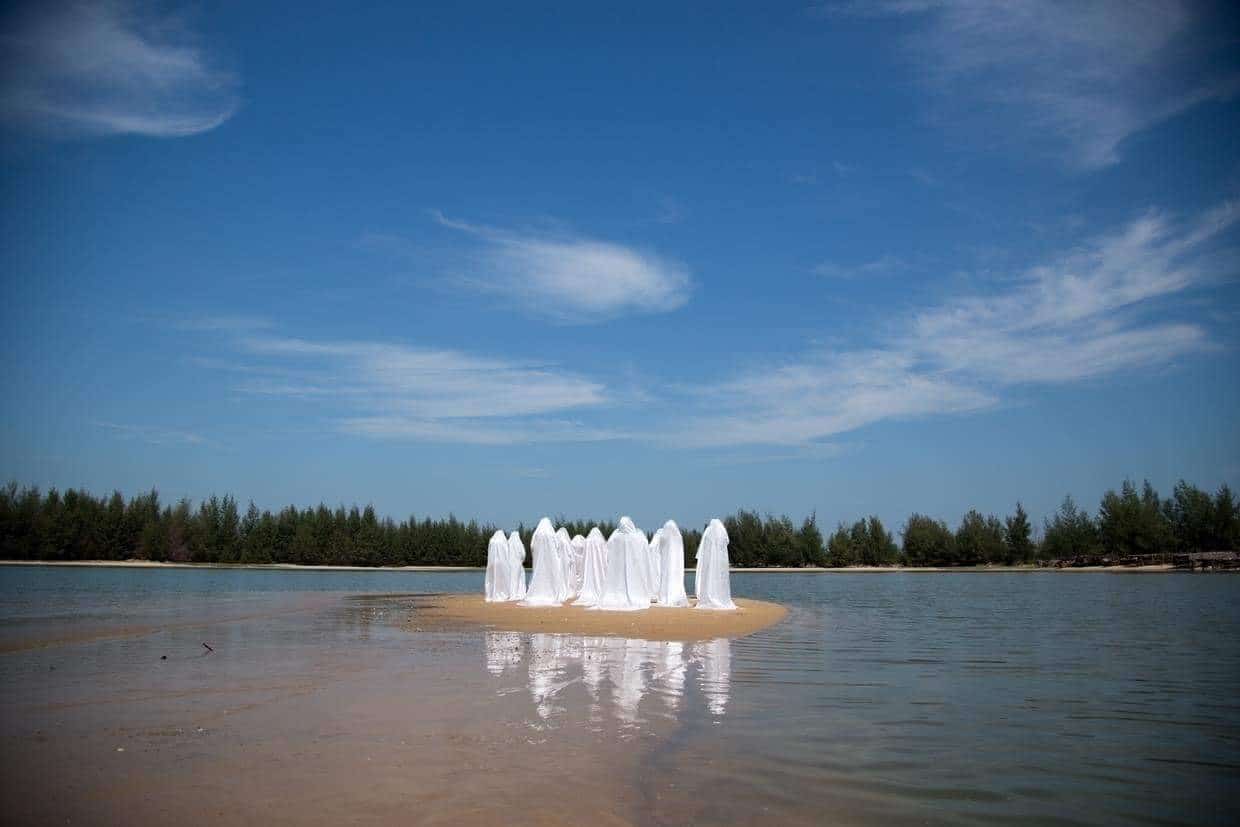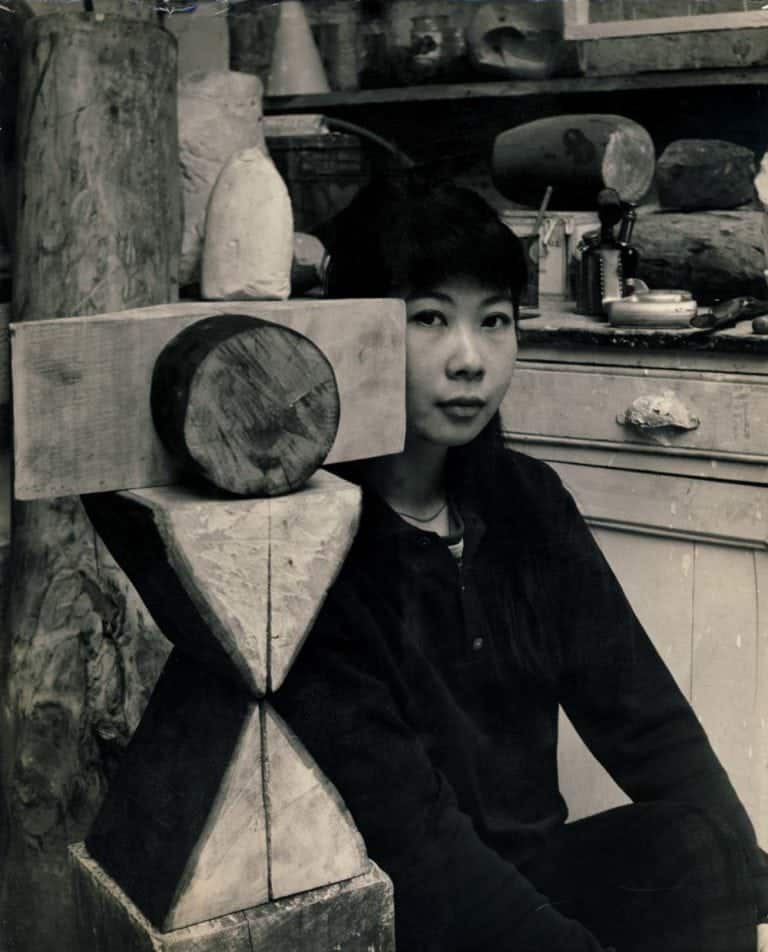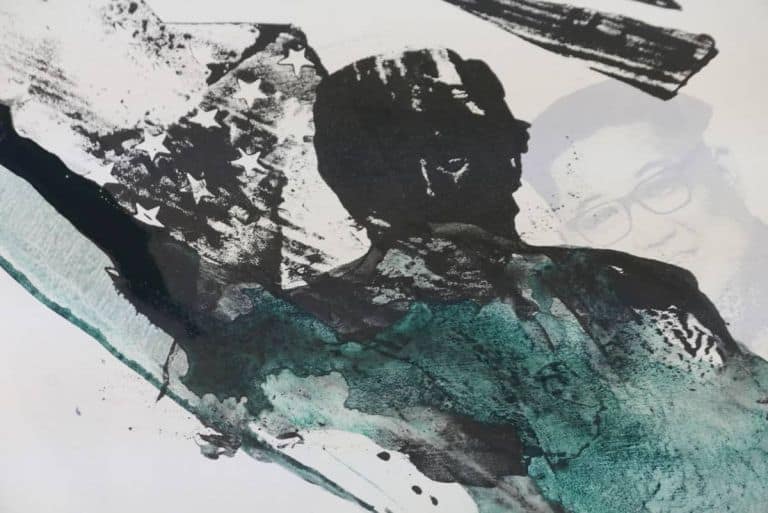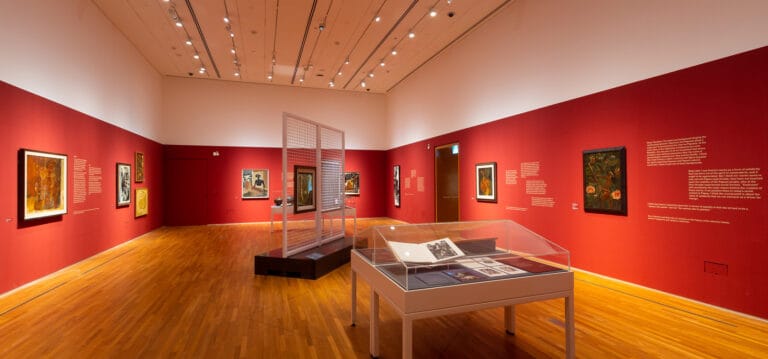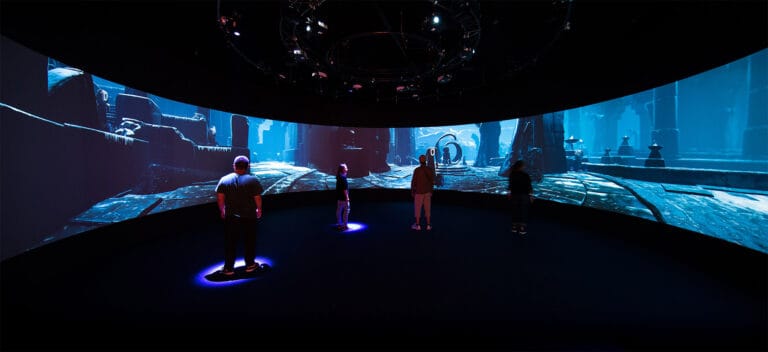Picture this: It is dark and quiet.
You’re on a boat, bobbing in the murky water.
The night is punctuated by sparkles of light from the port. Around you are fishing boats, both near and far.
Slowly, your boat makes its way away from the pier.
The blackness obliterates any distinction which might exist between the sea and the sky. The dots of light from the faraway port, which were tiny, to begin with, become more and more minuscule.
The boat starts rocking, gently initially, but the swaying soon becomes more pronounced. Suddenly, the horizontal lights from the port turn diagonal and you can’t tell if the boat is sinking or if the whole episode was but a dream.
What I’ve just described is Lost Motherland 2018 (Without Lightness), a 2-channel video projection by Thai artist Ampannee Satoh, a work which is part of the artist’s solo exhibition Lost Motherland, at A+ Works of Art in Kuala Lumpur until 30 June. The projection of Lost Motherland 2018 (Without Lightness) takes place on two screens that face each other in a pitch-black room, creating a sense of eeriness. Doubtless, the work is a representation of the tragedy that continues to inflict many migrants and refugees fleeing ethno-nationalist conflicts. As an artist who has worked mainly with photography, Lost Motherland 2018 (Without Lightness) is perhaps art historically important, as it marks Ampannee’s first foray into video art.
Having grown up in the conflict-ridden Pattani region in Thailand’s Muslim-majority deep south, this body of work is composed of videos and photography, and is an autobiographical narrative of Ampannee’s grief over the loss of her motherland. By way of background, the Pattani region is presently embroiled in an insurgency driven by a desire for independence.
Lost Motherland is also partly inspired by the artist’s desire to show solidarity with Rohingya refugees. She remembers coming across photographs of refugees fleeing to Bangladesh and being strongly affected by what was happening to them. Her personal experience of having grown up in a region which is unaccepting of her community has allowed her to empathise strongly with the plight of the Rohingya refugees, who have similarly lost their motherland after being driven out by the military junta in Myanmar.
In the work Lost Motherland 04, Ampannee stages a group of women in white burqas, with their backs facing the spectator, while standing in a desolate landscape marked by tall coconut trees, and a clear blue sky. The motif of women wearing white burqas is repeated in a series of photographs, with differing backgrounds:
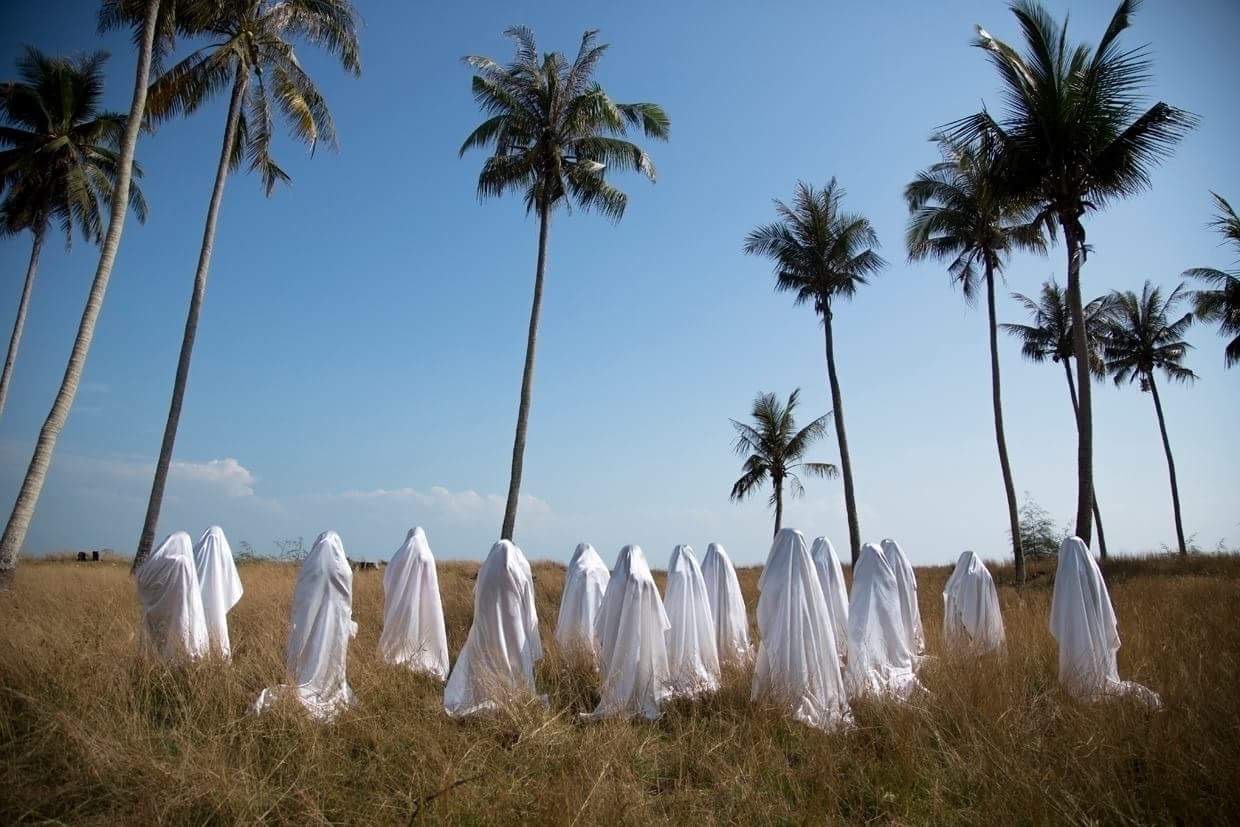
In Lost Motherland 07, broken branches on the beach foreground the image while the women are positioned between the branches and the sea, with their gazes directed towards the latter:
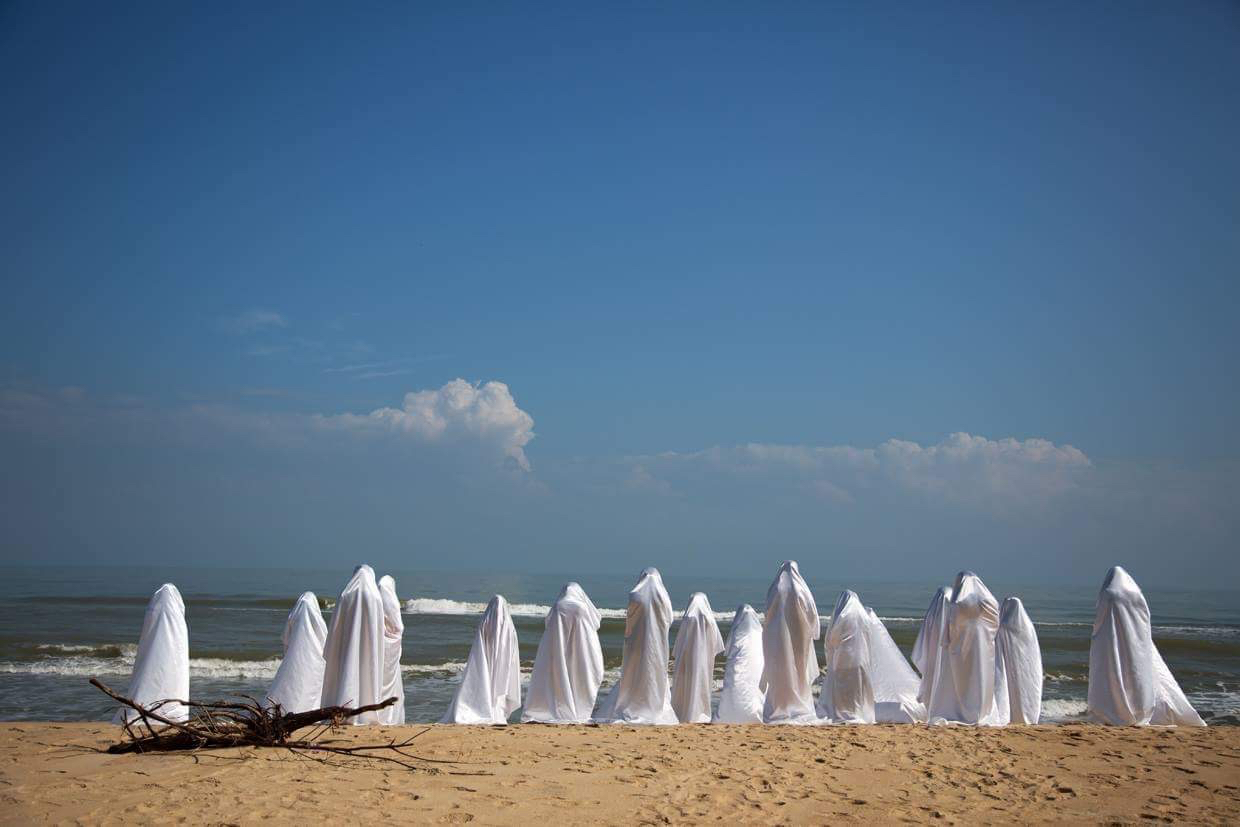
Ampannee is known for her deliberate usage of colours. For example, in the Burqa (2010) series, she employed the colours red, white and blue as a statement against the French ban on burqas. In Islam, the colour white symbolizes purity and peace; thus, the choice for white burqas is, perhaps, a depiction of Ampannee and her community’s desire for peace and the end of the conflict in Pattani.
When asked about her recurring inclination to photograph women in groups, Ampannee explained that the multitude of women are representations of herself, or more precisely, a visual manifestation of the myriad emotions associated with sorrow and sympathy, which she feels for the refugees and her fellow Pattanians. Coming from the Pattani region in Thailand, where the state has a track record of perpetrating violence against its Muslim inhabitants in an otherwise Buddhist-majority country, Ampannee admits that she sees herself as a refugee within her own country. As such, the Lost Motherland series is both personally local and globally relatable, the latter of which is evidenced by the reception of the works, which are part of a travelling exhibition, A Beast, a god and a line. This show was presented at the Dhaka Art Summit earlier this year, at Para Site in Hong Kong, and is now showing in Yangon, Myanmar. In A Beast, a god and a line, the show’s curators observed that Ampannee’s photos are imbued with a sense of loss, additionally explaining that:
“The figures in her photographs seem gathered to mourn a collective pain, standing as mute witnesses to tragedy.”
Walking through the exhibition, it became obvious to me that the sea is an element which frequently appears in Ampannee’s works.
Acting as both bridge and barrier, the sea has been, for the longest time, a site mired in the politics of migration and has been central to the making of the modern world. As such, the sea has been a topic of interest for artists both in the East and West.
As an example, I find that Ampannee’s works resonate with French-Algerian artist Zineb Sedira’s 2008 Shipwreck series, which documents shipwrecks which have washed ashore, being testament to the many failed journeys of sub-Saharan Africans attempting to escape to Europe from Mauritania:
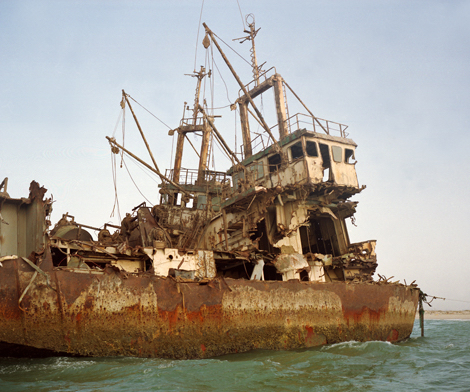
If Sedira’s Shipwreck series captures failed attempts at crossing the sea, Ampannee’s other video Lost Motherland 2018 does the opposite. Lost Motherland 2018 is a video documentation of the artist’s performance. Dressed in a white burqa, she performs the spiritual act of caressing a wooden boat on a beach with white paint, as though blessing the boat to prepare it for its treacherous voyage ahead:

Both Sedira and Ampannee are part of a broader general movement by artists to address the refugee crisis. For instance, musician M.I.A.’s music video “Borders”, shows dishevelled masses crossing borders by sea and land, and features imagery such as individuals perched on boulders by the sea, donning golden, crinkly space blankets, whose purpose has taken on a whole new meaning in the context of the crisis.
For Ampannee, an important part of her art practice involves her full time teaching position at the Faculty of Art and Design at Rangsit University. In Thailand, photography’s association with contemporary art is still fairly recent.
Indeed, Clare Veal observes that when Thailand’s first art school, Silpakorn was established in 1933, photography was not included in the school’s curriculum. Its Italian founder, Silpa Bhirasri thought the medium was diametrically opposed to the fine arts, because of photography’s association with the technological; thus, it was thought to be able to merely capture reality and no more. Hence, its practitioners tried to de-emphasize photography’s technical abilities and sought instead to elevate it to the realm of fine art. This was reflected in the Royal Photographic Society of Thailand’s partiality towards two movements, namely: Pictorialism, which emphasized beauty, composition and tonality and Surrealism, which was in pursuit of harnessing the creative potential of the unconscious mind.
In the 1980s, the likes of Itthi Khongkhakul and Pramuan Burusphat, after having studied in the United States and been exposed to photography and conceptual art, returned to Thailand and created artworks using photography as a means to an end, and not just an end in itself, in order to reveal the medium’s universal appeal through its political and creative potential. (See the full essay by Veal here).
As the head of the Department of Photography at Rangsit University, Ampannee hopes to be able to continue to develop the medium and to guide her students in creating contemporary art using photography. Ampannee has always been personally drawn to the medium, having embarked on her own tertiary education in fine arts and photography, at both Rangsit University in Thailand and L’École Nationale Supérieure de la Photographie in Arles, France.
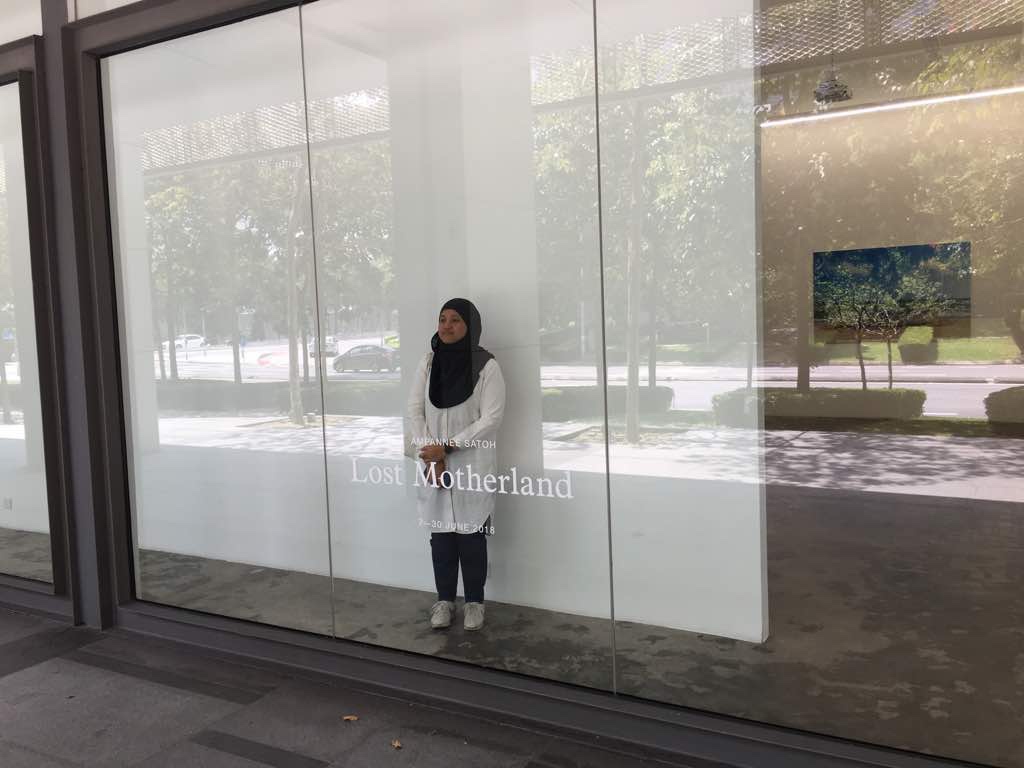
Given the amount of poorly executed art that is currently being made about the refugee crisis, Lost Motherland offers a timely and sensitive exploration of the emotions associated with the loss of national identity, trauma, and the subjugation of the weak.
Artists would do well to learn a thing or two from Ampannee’s moving presentation.
Lost Motherland runs at A+ Works of Art, Kuala Lumpur, till 30 June 2018.
